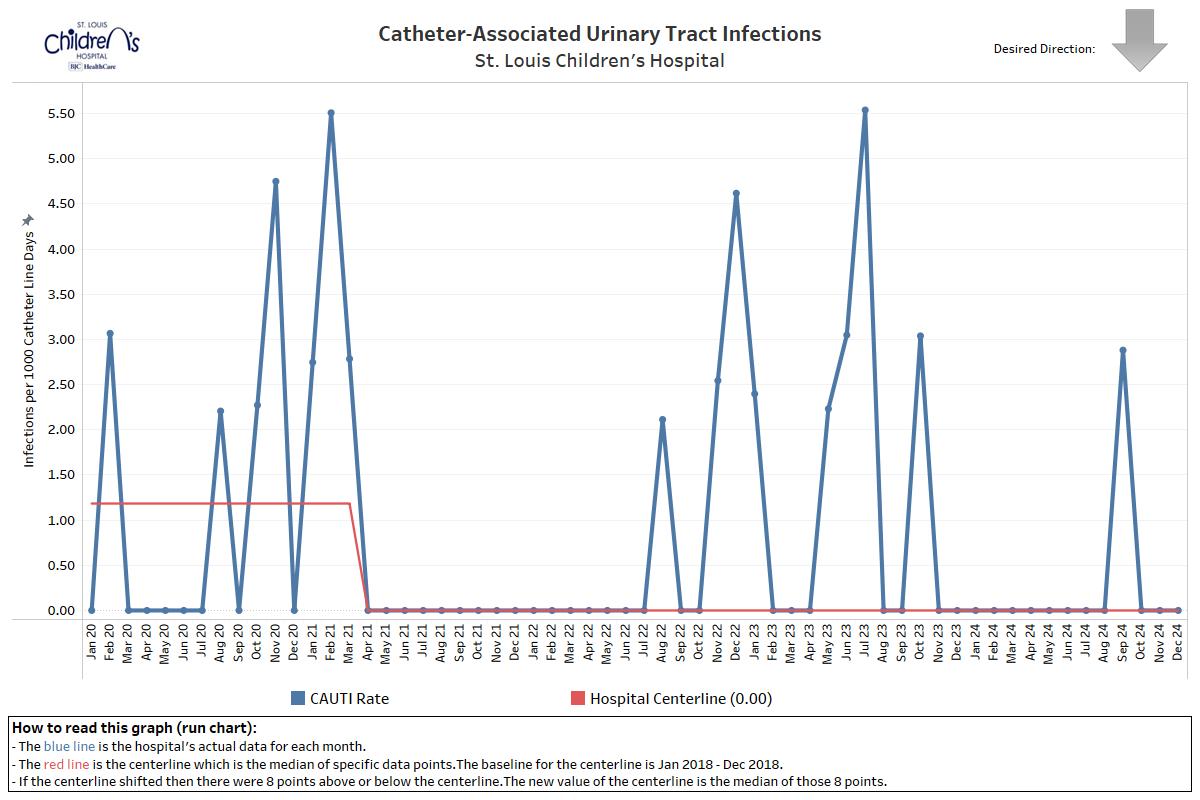What is a catheter-associated urinary tract infection?
The urinary tract refers to the organs that produce, store, and discharge urine. These organs include the kidneys, ureters, urethra, and bladder. A urinary catheter is a thin tube placed in the bladder to drain urine. This may be necessary for various medical reasons. Infections can be caused when germs travel along or around the catheter and enter the urinary tract. A catheter-associated urinary tract infection is when a patient with an indwelling urinary catheter develops a urinary tract infection.
Why we measure the number of catheter-associated urinary tract infections:
Catheter-associated urinary tract infections are associated with longer stays in the hospital, higher costs, and sickness. These infections are treatable, but often, they are also preventable.
How we measure:
The number of catheter-associated urinary tract infections per 1,000 catheter line days. Each day that a patient has a catheter counts as one catheter line day.
What we are doing to improve:
- Reviewing every day whether or not each patient with a urinary catheter still needs one (according to CDC guidelines).
- Removing urinary catheters when patients no longer need them.
- Nursing staff follow evidence-based best practices for inserting and maintaining urinary catheters to help prevent infection.
- Medical teams review each infection to see if anything could have been done differently, or if we can do anything to improve next time.
- Participating in Solutions for Patient Safety (SPS), a national improvement collaborative among children’s hospitals in the U.S. that focuses on reducing patient harm by sharing ideas, data, and best practices.
What can families do to help prevent catheter-associated urinary tract infections?
- Encourage your child’s medical team and all visitors to wash their hands.
- Ask your child’s medical team if your child still needs a urinary catheter. If so, then when can it be removed.
- Ask your child’s medical team about what they are doing to prevent catheter-associated infections in your child.
- Notify your child’s medical team anytime the child has an episode of incontinence.








